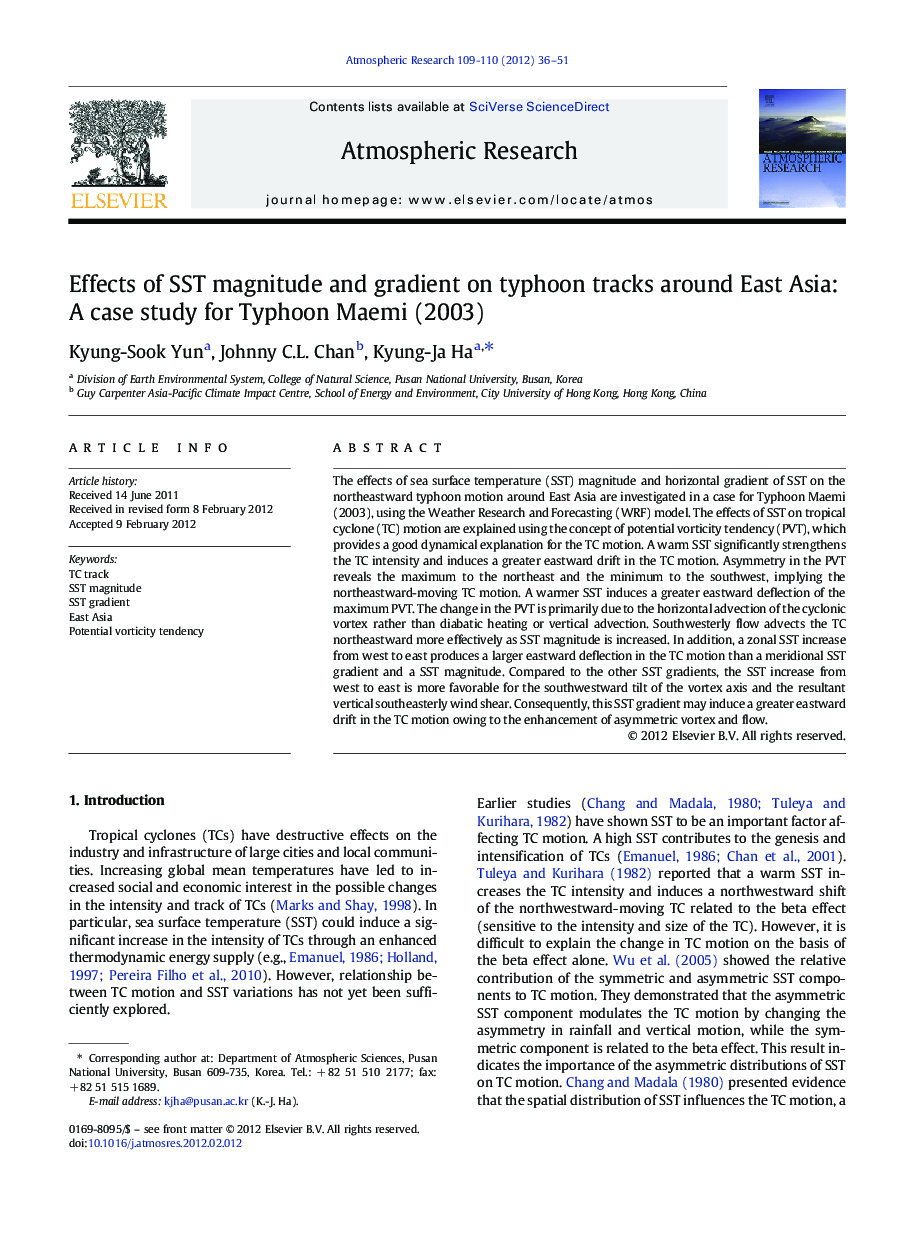| Article ID | Journal | Published Year | Pages | File Type |
|---|---|---|---|---|
| 4450229 | Atmospheric Research | 2012 | 16 Pages |
The effects of sea surface temperature (SST) magnitude and horizontal gradient of SST on the northeastward typhoon motion around East Asia are investigated in a case for Typhoon Maemi (2003), using the Weather Research and Forecasting (WRF) model. The effects of SST on tropical cyclone (TC) motion are explained using the concept of potential vorticity tendency (PVT), which provides a good dynamical explanation for the TC motion. A warm SST significantly strengthens the TC intensity and induces a greater eastward drift in the TC motion. Asymmetry in the PVT reveals the maximum to the northeast and the minimum to the southwest, implying the northeastward-moving TC motion. A warmer SST induces a greater eastward deflection of the maximum PVT. The change in the PVT is primarily due to the horizontal advection of the cyclonic vortex rather than diabatic heating or vertical advection. Southwesterly flow advects the TC northeastward more effectively as SST magnitude is increased. In addition, a zonal SST increase from west to east produces a larger eastward deflection in the TC motion than a meridional SST gradient and a SST magnitude. Compared to the other SST gradients, the SST increase from west to east is more favorable for the southwestward tilt of the vortex axis and the resultant verticalsoutheasterly wind shear. Consequently, this SST gradient may induce a greater eastward drift in the TC motion owing to the enhancement of asymmetric vortex and flow.
► A warm SST induces a greater eastward drift in the TC motion. ► Change in TC track is primarily due to the horizontal advection of the vortex. ► A zonally increased SST from west to east produces a larger eastward deflection. ► The eastward movement is due to the enhancement of asymmetric vortex.
